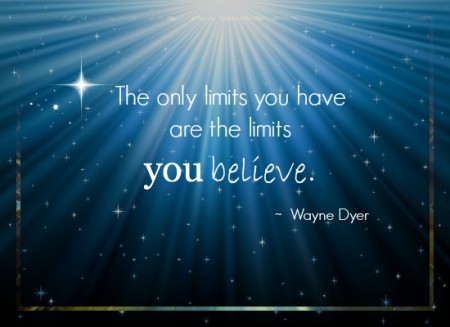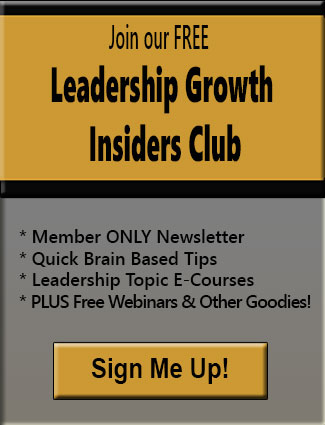The Secret to Rapid Leadership Breakthroughs
Does any of these sound familiar?
- You aspire to achieve great things, yet stay “small” for fear of failing.
- What about the thousands of dollars you’ve invested in leadership books and training, yet still find yourself stuck in the same rut and don’t know how to get out?
- Are you continuously swamped by the endless hours that your role demands, yet get diminishing returns from all your efforts?
You are not alone. Most leaders harbor fears, negative thoughts and emotions that seriously undermine their achievements. Here is one such story.
How One High Performing Leader Was Sabotaging His Own Potential
About 10 years ago, I worked with a leader being groomed to become President of a fast growing company. He was ambitious, smart and a quick learner. He thrived on achieving big goals and was the high performing potential that every CEO dies for.
From outside appearances, there was nothing stopping him to take the company to the next level. Or was there?
The CEO asked me to coach this new leader around becoming a team player. His behaviors at executive meetings gave the appearance that his personal agenda was more important than the team/company agenda.
The truth was … his personal agenda was more important at that time. In his mind, sacrificing his desires for team goals meant not achieving personal success. He was stuck in “either-or” thinking and that was preventing him from gaining the trust and credibility of his team.
While your limiting leadership beliefs may be different, what you do have in common is that nothing will change unless you change on the inside first. External change by itself – ie., behaviors, actions or skills/knowledge — is never the solution.
While change is a multilevel complex process, this leader needed to change on the belief level to realize a rapid breakthrough.
Because beliefs are powerful thought patterns that drive your emotions, behaviors and action, this article will focus on belief change, although it’s not the only type of change that may be needed.
No leadership or organizational goal can be achieved without the right beliefs in place. First, let’s take a quick look at the basics of the inner change.
A Simple (but not easy) Formula for Leadership Change
When addressing limited beliefs, the goal is to move you from your present state (problem) to your desired state (goal). However, inner interference – your internal terrorists — hijack your best efforts to achieve your desired outcome.
Present (Problem) State + Resource = Desired Change
↑ ↑ ↑
Interference
(Limited Beliefs or Inner Conflicts)
For you to achieve your desired state/change, the following conditions must be present:
- You must want to change.
This condition relates to desirability and confidence. You must be 100% congruent with the change or goal you are seeking.
- You must know how to change.
You must believe that you have the capability to produce desired results.
- You must believe it is possible for you to achieve your desired state and that you deserve to achieve it.
You need to be willing to give yourself time for the change to happen and to integrate the learnings. You must also believe you are worthy of achieving this outcome.
When these 3 conditions are present, leadership breakthroughs can happen … in an instant. When one or more conditions are absent, then you must change some aspect of your mental map to achieve a breakthrough. That’s where belief work comes in.
How Changing Your Leaders’ Beliefs Changes Company Results
Beliefs are not innocent things. They are unconscious strongly held convictions that you believe are true and fact, yet they are neither. They are judgments about yourself, about others and about the world. They are the lens through which you view everything. They …
- Influence your perception
- Skew your perspective and decision making in positive and negative ways
- Direct an/or limit your actions
- Shape your character in effective and ineffective ways
- Create the boundary conditions of your thinking
- Drive all behaviors, emotions and subjective experiences
“If you want to uncover your beliefs, just look at your results. “
Your leadership beliefs are the power source for your company’s results and for the culture you’ve created in the present.
The question is: are those the results and culture you really want?
You say you have a compelling vision. Do you believe it is possible?
You say you have core values. Do you have beliefs conflicting with those values that drive different choices and actions?
You say employees matter. Do you make them feel appreciated, recognized and heard?
You say that you put customers first. Do they believe it?
Are your results matching what you say you want? If not, it may have nothing to do with the words you are saying; it could be that your employees may not believe them.
In the end, you have one of two choices.
Either you can keep going as you are and live with your current problems OR you can kick those sabotaging beliefs to the curb for good. If you chose the later, read on.
Types of Beliefs Every Leader Needs to Know About
All beliefs can be categorized into one of three types. Knowing how each type effects you and your organization is crucial to the change process.
-
Beliefs about Cause
We all have beliefs about cause. They are reflected in your goals, plans, actions and decisions.
Beliefs about cause are implied in the form … “X” causes “y.” Let’s take a look at examples.
What do you believe …
- Are the traits of great leaders?
- Drives high performance in an organization?
- Motivates employees?
- Is the reason for your unrealized goals?
- Makes your company successful or not successful?
Whether you realize it or not, these are all beliefs. Not facts. Not truth. Simply beliefs.
They may not even be your beliefs. Many of your leadership beliefs, especially about cause, come from books, workshops, other leaders, etc. Taking on those beliefs may or may not serve you and the results you want.
The point is … as a leader, you must challenge every belief about “what causes what” to realize different outcomes.
2. Beliefs about Meaning
Our brains are meaning-making machines. We give meaning to past and current experiences, behaviors (ours and others’), communications (words and non-verbal), etc.
Beliefs about meaning are implied in the form … “x” means “y.” Let’s take a look at examples.
- What does it mean that your profits have declined for the last 3 months?
- Does it mean you have to cut staff?
- Does it mean you’ve failed?
- What does it mean that an employee has not met your expectations?
- Does it mean they are unmotivated?
- Does it mean you did not communicate clearly?
Beliefs about meaning result in behaviors congruent with that belief. For example, if profits fell and you believe it was from a bad decision, you will hold back in future decisions or taking necessary risks.
3. Beliefs about Identity
Beliefs about identity include cause, meaning and boundaries. When you change beliefs about your identity, it means that somehow you are/will be a different person.
Changing beliefs at the identity level is one of the most profound breakthroughs you can experience. It transforms who you are at your core and every aspect of your life.
Let’s look at examples.
- What causes you to do something as a leader?
- Do you see yourself as competent leader?
- Do you believe you don’t deserve to succeed?
- To hold your employees accountable, do you believe you have to become a dictator or control freak?
- Do you fear that you won’t be liked by your employees if you take tough actions or make tough decisions.
To summarize … beliefs may be beliefs of cause, meaning or identity. They may be about the world around you (eg., experiences or other people) or about yourself and your identity.
Beliefs are unconscious habitual thought processes that either undermine you or enhance you and your desired outcomes.
Nest step … Read the companion article — How Leaders Breakthrough Sabotaging Beliefs … With Velocity – to learn how to detect limiting beliefs and simple ways for changing them to experience a rapid leadership breakthrough.





